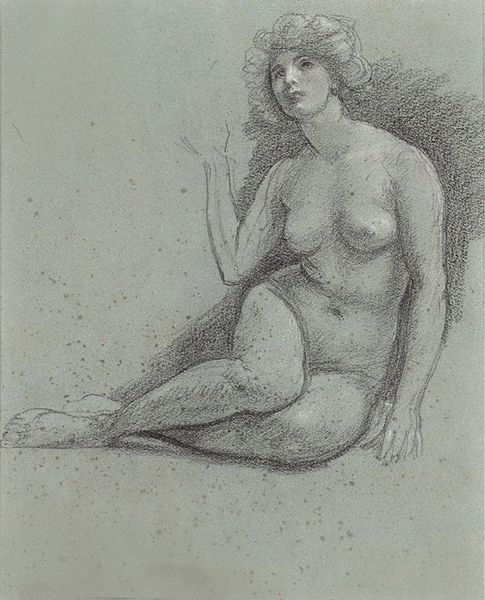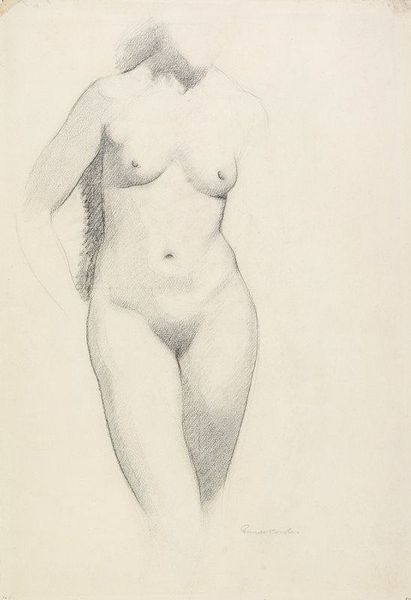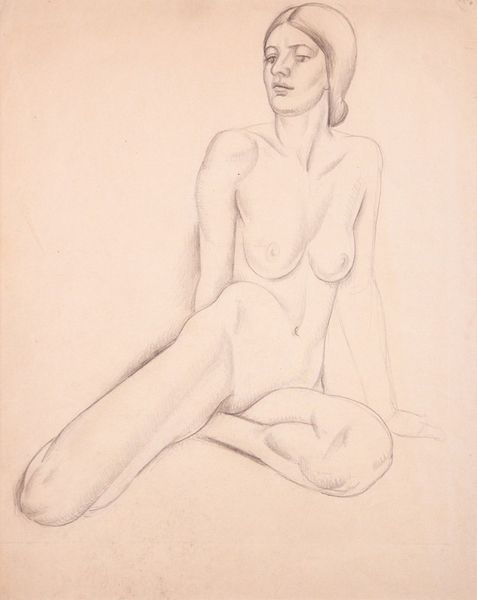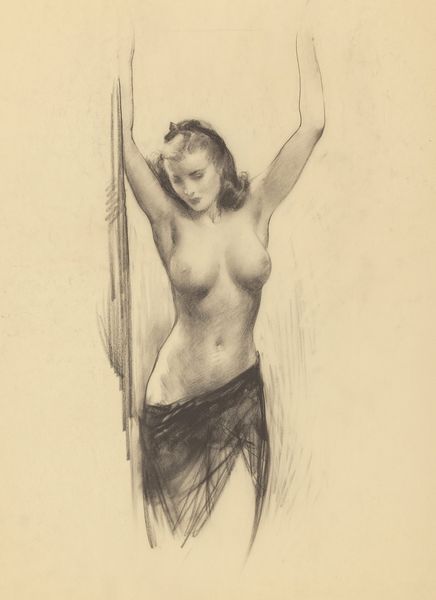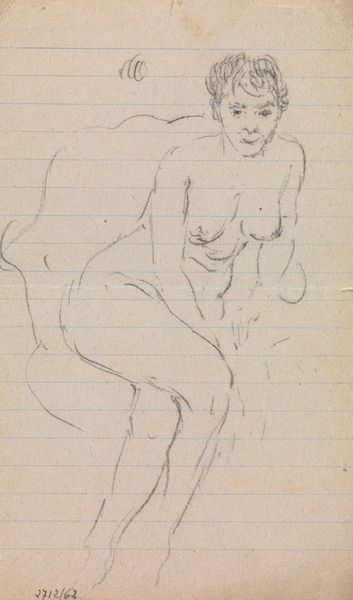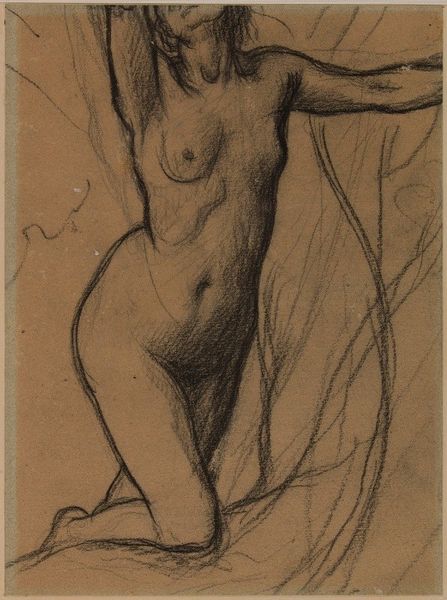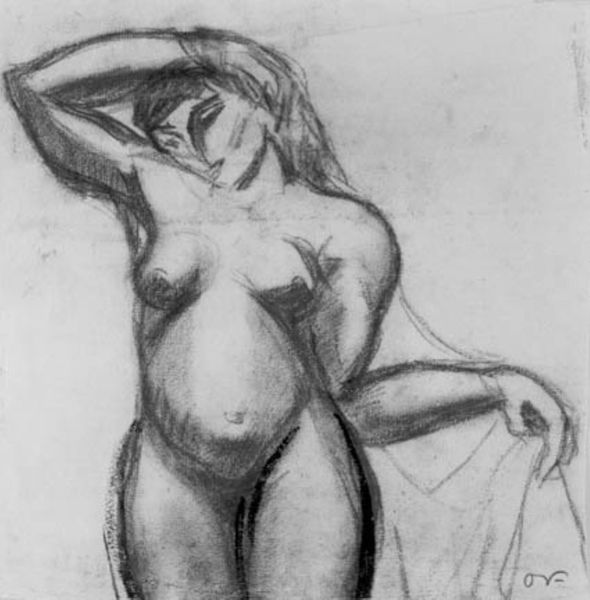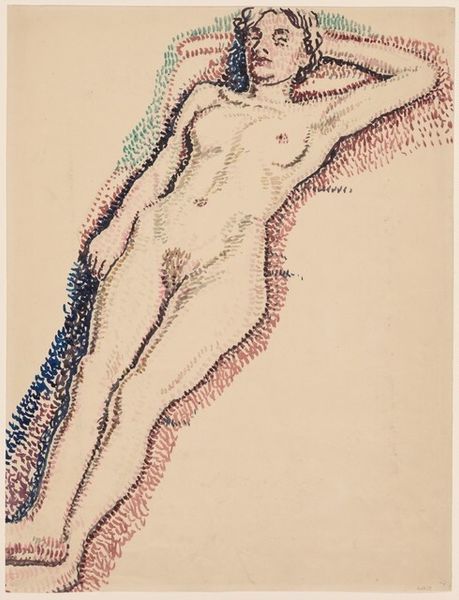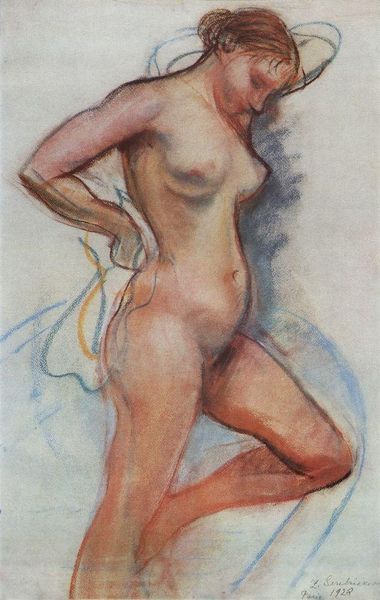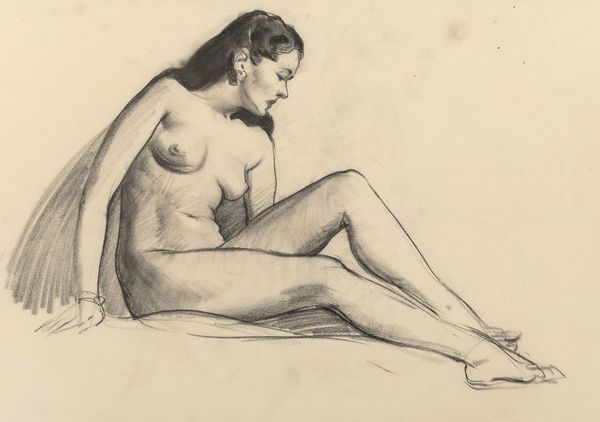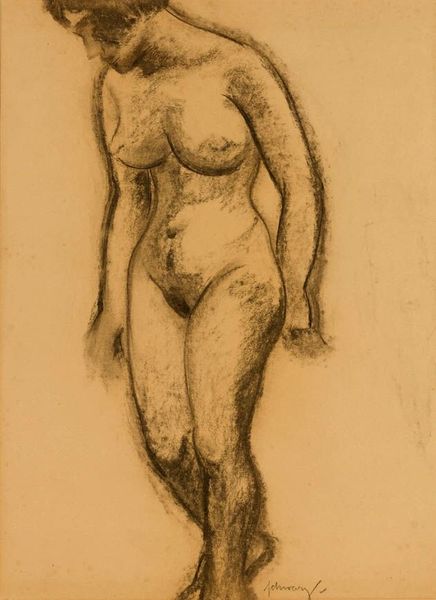
drawing, charcoal
#
drawing
#
charcoal drawing
#
figuration
#
pencil drawing
#
charcoal
#
academic-art
#
nude
Copyright: Public Domain: Artvee
Editor: This charcoal drawing, a Study of a Water-nymph for ‘Prospero Summoning Nymphs and Deities’ by Herbert James Draper, is so evocative. The figure seems to emerge from the darkness. What strikes me most is how Draper captures light on the figure's skin despite the limited medium. What do you see in this piece from a historical perspective? Curator: It's fascinating how Draper uses a classical subject in a period defined by evolving social mores and increased artistic freedom. Think about the context: Late Victorian and Edwardian England. Public art played a specific role. What purpose might this ‘study’ serve in that setting, given the themes of the finished painting? Editor: Well, perhaps he was trying to gauge public reaction, a test run before committing to a full-scale painting? Or maybe it allowed him to explore a sensual subject with more freedom since it was ‘just a study’. Curator: Exactly! Draper’s choice of subject matter—a classical nude—allowed him to navigate the complex and sometimes contradictory expectations of the art world and society. This wasn’t just an exercise in form, it was a negotiation with cultural values. Do you think the reception of the study and the finished painting differed based on class? Editor: I hadn't considered that. Perhaps wealthier patrons, more familiar with classical art, were more accepting of the nude figure. Curator: Precisely. Understanding art is really about recognizing this dynamic interaction. We're not just looking at the artwork, but also at its role in a much wider, often contested, social space. Editor: That's a fascinating point, how art functions within society. It really changes how I view pieces like this. Thanks for that!
Comments
No comments
Be the first to comment and join the conversation on the ultimate creative platform.
